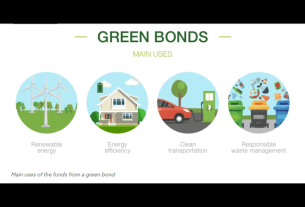
Huixuan Liao and Qian Gan, Sun Yat-sen University School of Life Sciences, discuss their article: ‘Spatiotemporal interaction of risk-spreading strategies for a seed-dimorphic plant’
Background
Maternal modification of offspring stress tolerance is a ubiquitous phenomenon in plant and animal kingdoms that affects population persistence and growth. When looking into this phenomenon, one can’t help but wonder how strongly and when do maternal individuals modify offspring performance. This is especially relevant when considering environmental uncertainty because maternal modification may increase the risk of reproductive failure of offspring if their offspring live in a habitat with little resemblance to the maternal habitat. Environmental uncertainty increases the chance of spatial and temporal mismatches between maternal and offspring habitat conditions. For animals, it would be reasonable to prepare their offspring only for the fatal incidences that are most likely to occur, and simply flee when conditions become intolerable. For plants, while they cannot think, make decisions, or move in the same way as animals, the tens of thousands of years of natural selection might have selected for specific modes of risk-spreading strategy that allow some species to have an advantage under changing environmental conditions.
This study
When we first set out to test our hypothesis about the differential risk-spreading strategies in plants, we pinpointed dispersibility as the key trait that affects the efficiency of risk spreading through maternal modification. For individuals that produce seeds with low dispersibility, offspring tend to stay in the same habitats as their parents. Therefore, natural selection may favor those individuals enhancing offspring pre-adaptation to local stresses. In contrast, for individuals that produce highly dispersible seeds, offspring environments are variable. Therefore, natural selection may favor those individuals being more invested in reproduction to increase chances of new population establishments but relax selection on maternal modification. This indicates that there should be a strong interaction between dispersibility and maternal modification on offspring stress tolerance.

During our preliminary study that included a dozen wind- or animal-dispersed asters, Qian discovered that one of our study species, Synedrella nodiflora, may be a perfect system for evaluating dispersibility-dependent maternal modifications because it simultaneously produces a more dispersible type (the disc type) and a less dispersible type (the ray type) of single-seed fruit (cypsela). This allows us to avoid the potential confounding effects of different evolutionary histories across species and focus on dispersibility per se. Another bonus of studying this species is that since it is spread all over the world and exhibits superior adaptability to various water conditions; its adaptive strategies will surely shed light on the ecological and evolutionary significances of seed dimorphism.
Our hypotheses
We hypothesized that offspring drought tolerance of Synedrella, a characteristic directly related to the risk of reproductive failure under drought, can be altered by maternal drought stress through three dispersibility-dependent pathways: (1) modification of mean offspring drought tolerance; (2) modification of offspring drought tolerance variation; (3) alteration in the relative abundances of dimorphic seeds. These pathways can reduce the overall risk of reproductive failure under severe drought stress and allow survival under various water conditions.

What we did
We collected the more-dispersible disc and less-dispersible ray cypsela of Synedrella from a dry and a wet habitat in Guangdong Province, China, and grew these seeds in a controlled greenhouse under drought and well-watered conditions for two generations. We addressed the following questions: (1) How does maternal drought impact the mean and variation of drought tolerance of the less- vs. more-dispersible offspring? (2) Does maternal drought impact the relative abundance of the less- vs. more-dispersible offspring? (3) How does maternal drought influence the mean and variation of offspring drought tolerance at the species level?

What we found
Maternal drought stress increased the mean or variation of drought tolerance of the less-dispersible offspring, whereas it had variable effects on the drought tolerance of the more-dispersible offspring depending on maternal seed morph (ray vs. disc cypsela) and habitat (dry vs. wet). There was an overall increase in the intraspecific mean and variation of drought tolerance under maternal drought stress, driven by the changes in the less-dispersible offspring.
Our results indicate maternal modification of offspring stress tolerance may be strongly associated with dispersibility. It is important to note that variation in dispersibility itself is a risk-spreading strategy at the spatial dimension, whereas variation in offspring drought tolerance is a risk-spreading strategy at the temporal dimension. Therefore, our study demonstrates a potential pathway for the adaptive evolution of seed-dimorphic plants, which involves the interaction between spatial and temporal risk-spreading strategies. This may explain the existence of so many seed-dimorphic plant species and the wide distributional ranges of these species.
